
Heaven and Earth
Anniversary Issue to Honor Karsten Harries
August 2007
 |
Heaven and Earth |
|
|
Vol. 12,
No. 1
August 2007 |
| ___Kenneth
Frampton New York |
Intimations of Tactility Excerpts from a Fragmentary Polemic |
 A typical Japanese village in the Yamato basin showing rectangular allotment of land, which gives the settlement a basic pattern. |
Man’s history will progressively become a vast explanation in which each civilization will work out its perception of the world by confronting all others. But this progress has hardly begun. It is probably the great task of generations to come. No one can say what will become of our civilization when it has really met different civilizations by means other than the shock of conquest and domination. But we have to admit that this encounter has not yet taken place at the level of an authentic dialogue. That is why we are in a kind of lull or interregnum in which we can no longer practice the dogmatism of a single truth, and in which we are not yet capable of conquering the scepticism into which we have stepped. Paul Ricœur [1]
|
|
 Fig. 1: Jan Vredeman de Vries, from Perspective, 1604-05, plate 28 of Part I. |
With J.N.L. Durand, perspectival space decomposes into instrumentality.
Orthogonal coordinates now function less as registers for the guidance
of foreshortened sight (fig. 1)
than as modular components in an economic and universal system of
assembly. Architecture begins to divide at this juncture into polar
aspects – into pure technique and pure ideology, the abacus and the
mask. His Precis des leçons d’architecture données à l’école
polytechnique, 1802-09, posits a variable connection between
orthogonal logic and physiognomy. The “heads, bodies and legs” of
reduced historical styles are pressed into the service of the absolutist
state. The customs house, the prison, the museum, each takes its fitting
but still arbitrary mask from Durand’s catalogue. The volume itself is
left as open-ended as possible; the Crystal Palace (1851) testifies, in
a disturbing way, to the empty lucidity of Durand’s vision. It was to
fill its technical void with objets d’art or machine tools; all
reduced to the two categories of either commodity or productive means. 3. Gesamtkunstwerk ”Digression on art nouveau. The shattering of the interior took place around the turn of the century in art nouveau. And yet the latter appeared, according to its ideology, to bring with it the perfecting of the interior. The transfiguration of the lone soul was its apparent aim. Individualism was its theory. With Vandervelde, there appeared the house as expression of the personality. Ornament was to such a house what the signature is to a painting. The real significance of art nouveau was not expressed in this ideology. It represented the last attempt at a sortie on the part of Art imprisoned by technical advance within her ivory tower. It mobilized all the reserve forces of interiority. They found their expression in the mediumistic language of line, in the flower as symbol of the naked, vegetable Nature that confronted the technologically armed environment. The new elements of construction in iron – girder-forms – obsessed art nouveau. Through ornament, it strove to win back these forms for Art. Concrete offered it new possibilities for the creation of plastic forms in architecture. Around this time the real centre of gravity of the sphere of existence was displaced to the office. The de-realized centre of gravity created its abode in the private home. Ibsen’s Masterbuilder summed up art nouveau: the attempt of the individual, on the basis of his interiority, to vie with technical progress leads to his downfall.”[3] As a way of compensating for the progressive alienation of commutation and Taylorized production and for what Simone Weil was later to recognize as L’Enracinement,[4] the home gives itself over to the scenographic, to dream imagery. But this hallucinatory décor – literally hermetic in the case of Ludwig of Bavaria’s Traumeschlösser – only facilitates the triumph of “distanced” vision. Wagnerian indulgence in the creation of a compensatory Gesamtkunstwerk has the effect of bestowing greater freedom on instrumentality. Meanwhile the continuous curve of surveillance and control quietly extends its efficacy and breadth from Bentham’s ‘one-way mirror’ in his Panopticon (1796) to the equally ubiquitous cathode-ray tube in today’s suburbs. As Robert Venturi so sensibly put it in Complexity and Contradiction in Architecture: “The piazza, in fact, is ‘un-American’. Americans feel uncomfortable sitting in a square: they should be working at the office or at home with the family looking at television.” 4. Privatization |
|
    Fig. 2a - 2d: Subdivision under construction, near Los Angeles. Photos: William Garnett. |
The automobile and the television combine to enforce the “privatization”
of the suburb; that is, the elimination of the sidewalk and the
usurpation of the “space of public appearance” in the home. For the
rest, the average subdivision is reduced to the instrumentality of
balloon-frame assembly. The required stacks of pre-cut scantlings are
set down at regular intervals, while for optimum economy the site is
bulldozed flat (fig. 2a
- 2d).
Apparently, the cheapest of masks is considered sufficient to sustain an
illusion of rootedness – a pitched roof here, a dormer there. These
structural features may be accorded additional “iconicity” through the
application of a plywood pediment or plastic flute. 5. Convergence We live in a period of repetition and convergence. The apparent “avant-garde” reasserts itself in all its rhetoric, but only the agitation is radical, for the content is reactionary. N’épatez pas le bourgeois! Drawn at random from the emporium of the past, styles are now being pressed upon us in the form of “simulacra”. The aim, we are assured, is to save us from nihilism of an impoverished age; to redeem us from the precipice of materialist abstraction. But there is now an unfortunate convergence of the purveyors of kitsch and a conciliatory avant-garde, both of which groups seem to be equally determined by the voracious demands of the media. And the major question becomes, how is one to distinguish today between a responsiveness towards history and a regurgitation of meaningless references, or, more specifically, between Barthes’ concept of répétition différente and mere empty repetition? 6. History The brutalization of the environment and that strange alienation that eerily insinuates itself into much modern building – that hallucinatory éclat in which vast and complex public structures uncannily reduce themselves to the status of commodities – finds its compensatory but pathetic parallel in the current proliferation of information about the lost architecture of even the relatively recent past, or the unbuilt and often unbuildable architecture of the future. Before this prospect one is reminded of Ernst Jünger’s lament in his elegiac novel On the Marble Cliffs, where he wrote: “There are periods pf decline when the pattern fades to which our inmost life must conform. When we enter upon them we sway and lose our balance. From hollow joy we sink to leaden sorrow, and past and future acquire a new charm from our sense of loss. So we wander aimlessly in the irretrievable past or in distant Utopias; but the fleeting moment we cannot grasp.”[5] 7. Kitsch ”The environment grows, sprawls, dissipates itself and leaves behind it a trail of refuse, all as a concomitant of our activities. Its relationship with us becomes ever more imperious as it virtually imposes upon us the laws of a second nature whose characteristics, whether on an urban or a domestic scale, whether in the house, in the city or in the country, stem in the great majority of cases from the conception of kitsch as a midcult. … Yet we may still ask how much of midcult was already inherent in the same idealistic principles of modern culture, or to what extent the concern for humanity, the focus on the housing problem and the family unit and that same preoccupation with the potential broadening of the benefits of art are also embodied in the principles of kitsch… Kitsch is at work as much in the physical exuberance of certain buildings as in the extravagant futility of various gadgets. … This is the true projection of that spiteful lust for power which midcult evinces and technics express: the two combine to produce an architecture built purely for effect and devoid not only of meaning but lacking even in practical use. … Kitsch augments the variety of forms present in the world very considerably, and at the same time substantially reduces their significance, but kitsch is not to be numbered among the things which rational thought has shown to be recoverable… Kitsch is, on the contrary, one of the invalid sociological and esthetic techniques concerned with the production and enjoyment of things. These techniques are themselves based on … an inherent lack of clarity. … [Kitsch] does not accept the nature of things in the light of their critical or revelatory attributes, but to the extent which they cover and protect, relieve and console.”[6] 8. Simulacra |
|
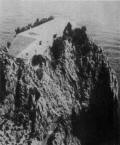 Fig. 3: Adalberto Libera, Malaparte's Villa, 1940, Capri. 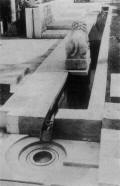 Fig. 4: Carlo Scarpa, Querini Stampalia, 1961-63, Venice. Basin extending the length of the parterre; its border serves also as a bench. |
The present project to reduce architectural practice to the
proliferation of supposedly reassuring, historical simulacra has as its
ultimate aim the optimization of instrumentality. As Jean Baudrillard
has argued in his book Le miroir de la production (1973), the
practice of culture today is frequently reduced to simulacra, to the
signs of signs. In this connection it is relevant to note that the
creation of a poetic architectural image does not depend upon visual
considerations alone. In fact, it could be claimed that the dominance of
the visual is detrimental to architecture. This seems to have been
understood by Adalberto Libera when he designed Curzio Malaparte’s house
in Capri (1940). This house rises from the cliff face as an acropolis of
vertigo and terror, as a reinterpretation of the 18th-century esthetic
of the genre terrible (fig. 3). 9. Reproduction Abraham Moles once wrote that the monuments of Europe are being worn out by Kodaks. The veil that photolithography draws over architecture is not neutral. High speed photographic and reproductive processes are surely not only the agents of the political economy of the sign but also provide an insidious filter through which our tactile environment tends to lose its concrete responsiveness. When much of modern building is experienced in actuality, its photogenic, sculptural quality is denied by the poverty and brutality of its detailing. Time and again an expensive and ostentatious display of either structure of form results in the impoverishment of intimacy – in that which Heidegger has recognized as the loss of nearness. 10. Tactility The tactile returns us literally to detail, to handrails and other anthropomorphic elements with which we have intimate contact; to the hypersensitivity of Alvar Aalto, to the coldness of metal and the warmth of wood; to a comparable sensibility in the work of Carlo Scarpa, who was capable of articulating a building in such a way that its surface implied a range of sensuous experience. In Scarpa’s later work, the built-form is inlaid with binary stimuli and associations: smooth versus rough, polished versus pitted, distended versus recessed, labial versus phallic (fig 4). 11. Boundary Heidegger’s critique of the Renaissance begins with his recognition of the difference between spatium in extensio (space) and Raum (place). One may extend Heidegger’s thesis to argue that the former accords primacy to the visual – to the rational distance of perspective – while the latter is disposed towards the tactile. The architectural significance of Heidegger’s “Building Dwelling Thinking” (first published in 1954) surely resides in these distinctions. Thus we find him writing: “What the word for space, Raum, Rum, designates is said by its ancient meaning. Raum means a place cleared of freed for settlement and lodging. A space is … something that is cleared and free, namely within a boundary, Greek peras. A boundary is not that at which something stops but, as the Greeks recognized, the boundary is that from which something begins its presencing.”[7] 12. Ritual Two interdependent channels of resistance proffer themselves against the ubiquity of the Megalopolis and the exclusivity of sight. They presuppose a mediation of the mind/body split in Western thought. They may be regarded as archaic agents with which to counter the potential universality of rootless civilization. The first of these is the tactile resilience of the place-form; the second is the sensorium of the body. These two are posited here as interdependent, because each is contingent on the other. The place-form is inaccessible to sight alone, just as simulacra exclude the tactile capacity of the body. The configuration of the peras must be felt as much as seen. Thus one encounters in pre-Renaissance agrarian culture the “beating of the bounds”, a ritual for the experiential and legal establishment of territory. Similar rites that are enacted cyclically and seasonally, and that serve not only to reify the peras, but also to reaffirm the body politic in relation to a specific place, spring to mind. The bull festivals of Spain or the binding rituals of Japan are but two examples. They are alluded to here, not as an archaic precondition for a tactile architecture, but rather as evidence that there have existed cultures in which the visual considerations played a less exclusive role. 13. Sensuality It is symptomatic of the dominance of the visual that it should be necessary to remind the reader that the tactile dimension belongs legitimately to the poetics of built form. One has in mind not only a typical Islamic court, where the ambulatory experience of the place-form is inseparable from the sound of water with which it invariably resonates, but also a whole range of composite sensory perceptions, the sum experience of which is affected by the movement of air or by relative humidity, or by the intensity of light or darkness, heat and cold, or by the aroma of material, or by the almost palpable presence of enclosure or by the body’s own momentum, gait and weight as it passes in and out of the domain. Examples abound where such various and diverse phenomena are an intrinsic part of the architecture itself. One thinks of staircases where the state of our psychophysical being, our rhythm and poise, are determined by the “going” itself, or conversely, one may recall a sudden confrontation with an open body of water, where scent, sound and air movement are part of the poetic experience. 14. Posture While filming The Damned, Luchino Visconti insisted that the set for the mansion in the film be paved with real parquet. It was his opinion that without a solid wooden floor underfoot the actors would be incapable of assuming an appropriate gait. Likewise, in Alvar Aalto’s Säynätsalo Town Hall (1950-52), the architectural promenade leading to the second floor council chamber is orchestrated in tactile terms. Not only is the staircase lined in raked brick-work, but the treads and risers are paved in brick. The kinetic impetus of climbing is thus checked by the friction of the steps. After this “resistance” the polished timber floor of the council chamber announces its honorific status, through sound, smell and texture, and above all through its slipperiness and its springy deflection under the weight of the body. 15. Landscape |
|
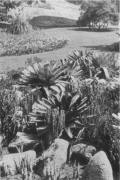 Fig. 5: Roberto Burle Marx, garden of Alberto Kronsforth residence, 1955, Terezopolis, Brazil. 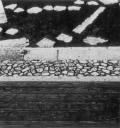 Fig. 6: Katsura, Kyōto, ca. 1590. The stepping stones at the junction of various passages in the moss of the entrance court. 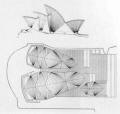 Fig. 7: Jørn Utzon, Sydney Opera House, 1956. Sydney, Australia. 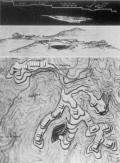 Fig. 8: Jørn Utzon, Elviria Complex, 1960. Elviria, Denmark.    Fig. 9a - 9c: Jørn Utzon, Silkeborg Museum, 1963. Silkeborg, Denmark.  Fig. 10: The Temple of Warriors, 11th Century A.D., Chichén-Itzá, Mexico.  Fig. 11: The flying team, kite association members, and a Shintō priest (extreme left) pose for a formal photograph before the annual flying of the Hoshubana Showa o-dako.  Fig. 12: Le Corbusier, Le Pavillon des Temps Nouveaux, 1937. Large conference hall.  Fig. 13: Adolphe Appia, set for King Lear, 1926.  Fig. 14: Frank Lloyd Wright, Imperial Hotel, 1922, Tokyo.  Fig. 15: Le Corbusier, Une maison de week-end, 1935, suburbs of Paris. |
The gardener Roberto Burle Marx conceived his post-Cubist landscape with
regard not only to color, form and texture, but also to its acoustic
capacity. Apart from the movement of water, the aural experience of his
garden depended on the acoustic resonance of certain plants, which
rustled when agitated by the wind or resonated with their resident
animal and insect (fig. 5). Aside
form Burle Marx the capacity of tactile landscape to affect the entire
sensorium has never been more intensely realized than in the Katsura
Palace, where changes in route rhythm not only represent metaphysical
shifts in an instantaneous but progressive apprehension of the cosmos
but also induce, in pursuit of the garden “narrative”, corresponding
changes in the state of the body, contingent upon revetment,
fragmentation, continuity, registered in terms of paving texture, ground
cover, etc. (fig. 6). 16. Earth The tactile gravitates towards the earth, towards the horizontal, towards a technology of building that us timeless and archaic, towards pisé, adobe, ashlar and even rock itself. The work of Utzon exemplifies an architecture of the earth, set invariably against the “canopy pf the aerial”. It is an architecture of section predicated upon a decisive configuration in the ground, regardless of whether this profile is manmade or natural. The preferred natural forms are the mountain, the declivity, the escarpment and the cave; their artificial equivalents are the platform, the atrium, the terrace and the cistern. These forms are occasions in which the tactile emerges into its own, for the articulation of form resides in the texture if the ground. This is an esthetic which has to be decoded by the body. In Utzon’s work one invariably rises onto an acropolis, enters into an atrium, descends an escarpment or penetrates a cave. Utzon’s exemplary types may be readily listed: the Sydney Opera House (fig. 7), the Fredensborg Housing, the Elviria Complex (fig. 8) and the Silkeborg Museum (fig. 9a - 9c). Archaic parallels can be drawn, and in some instances are cited by the architect: the Athenian Acropolis, the ziggurats at Uxmal and Chichén-Itzá (fig. 10), and the court of the Friday Mosque in Isfahan. For the paradigm of the cave evident in the unbuilt Silkeborg Museum, Utzon was to return to his experience of the Buddhist shrine at Tatung, China, of which he wrote: “The inspiration for the design of the museum emerges from a number of different experiences – among these, my visit to the caves in Tatung, west of Peking, where hundreds of Buddha sculptures and other figures have been carved in a number of rock caves at the river bed. These sculptures have all kinds of shapes – in contrast to, or in harmony with, the surrounding space. All the caves are of different sizes and shapes and have different sources of light. The old Chinese sculptors have been experimenting with all these possibilities, and the most fantastic result is one cave which is almost completely filled up by a Buddha figure with a face more than 20 ft. high. Three narrow platforms connected with ladders give the visitor an opportunity to walk around and get quite close to this gigantic figure.”[8] 17. Water ”My earliest childhood memories are related to a ranch ma family owned near the village of Mazamitla. It was a pueblo with hills, formed by houses with tile roofs and immense eaves to shield passersby from the heavy rains which fall in that area. Even the earth’s color was interesting because it was red earth. In this village, the water distribution system consisted of great gutted logs, in the form of troughs, which ran on a support structure of tree forks, five meters high, above the roofs. This aqueduct crossed over the town, reaching the patios, where there were great stone fountains to receive the water. The patios housed the stables, with cows and chickens, all together. Outside, in the street, there were iron rings to tie the horses. The channeled logs, covered with moss, dripped water all over town, of course. It gave this village the ambience of a fairy tale.” ”No, there are no photographs. I have only its memory.”[9] 18. Air The archaic tradition of inscribing memory in the earth (cf. Heizer, Smithson) is to be complemented by the paradoxical monumentality of the aerial, as in the canopies of Utzon or even more astringently in the trellises, banners, kites and fireworks (cf. Christo, Piene) that are to be commonly found in Oriental culture: the talisman rather than the tragic ruin, the eternal return rather than the myth of progress, the dynamic, impermanent rather than the static, permanent (fig. 11). A profound untapped expressiveness resides in this opposition between the earth and the aerial; a potential that cuts across history and culture to oppose the archaic gravity of the fixed to the volatile tectonic of the light. This much already lies latent as a dormant poetic in Le Corbusier’s Pavillon des Temps Nouveaux (1937) (fig. 12). 19. Body ”Anything which tends to alter the expression of weight, whatever end it serves, weakens bodily expression. The first principle for what Appia henceforth calls ‘living art’, perhaps the sole one from which all the others are automatically derived, is this: all forms other than bodily forms tend to be in opposition to the latter and never become one with them. It is the opposition offered to the body by space which makes it possible for the space to share in the life if the body, and, reciprocally, it is the body’s opposition which animates spatial form. Let us imagine a square, vertical pillar with its sharply defined right angles. This pillar without base rests on horizontal blocks which form the floor. It creates an impression of stability, of power to resist. A body approaches the pillar; from the contrast created between the movement of this body and the tranquil immobility of the pillar a sensation of expressive life is born, which neither the body without the pillar, nor the pillar without the body, would have been able to evoke. Moreover, the sinuous and rounded lines of the body differ essentially from the plane surfaces and angles of the pillar and this contrast is in itself expressive. Now the body touches the pillar; at once the opposition becomes more evident. Finally the body leans against the pillar, whose immobility offers it solid support; the pillar resists, it is active. Opposition has thus created life in inanimate form. Space has become living!”[10] (fig. 13). Adolphe Appia in his L’Oeuvre d’Art Vivant (1929) has this to say of the body in relation to architecture: “Music imposes its successive intervals on the movement of the body; this body transports them to the proportions of the space; the inanimate forms oppose the body with their rigidity, and this closes the circle beyond that there is nothing.”[11] 20. Membrane In the Megalopolis avant la lettre, Frank Lloyd Wright already recognized the crisis of the visual, and the perceptual instability of the façade. He also saw that this would have greater consequences for the public rather than the private realm. Hence his reduction of the public exterior to a silent, if not opaque, membrane; his renderings of the monument as an obdurate shell against the instrumental triumph of spatium in extensio (fig. 14). Thus from the Larkin Building in Buffalo (1904) to the Guggenheim Museum (1956-59), Wright assured the bounded “nearness” of his public monuments, by rendering them as introverted, top-lit atria enclosed on all sides by the tactility of penetrable and ultimately avisual “façades”. 21. Polemic Some 40 years have elapsed since the 20th-century avant-garde first adopted an anti-Enlightenment stance. One may still imagine the general outrage caused among the aficionados of modern architecture when Le Corbusier first committed the brut sacrilege of combining, into a convincing synthesis, traditional rubble stone cross-walling, reinforced concrete Catalonian vaults, grass sod roofing, bent plywood, glass lenses, plate glass, exposed brick-work and steel-framed fenestration, in his infamous Weekend House, built in the suburbs of Paris, in 1935 (fig. 15). The shock, one presumes, was hardly less when it became evident that his Pavilion des Temps Nouveaux had poetically inverted the nomadic tented diaphragm of the Hebraic temple in the wilderness. Once again one was confronted with a façadeless, avisual structure. The elevation of the tactile and the impermanent to the same level as the visual and the permanent begins to undermine the hold of perspective over the perceptive faculties of the mind. With this shift the camera stands to lose its monopoly over the representation of architectural form, and it is surely no accident that the more powerful examples of tactile work being realized today – that is, the buildings of Utzon, Barragán and Alvaro Siza – subtly evade all efforts on the part of the photolithographic media to reduce their complex substance to mere images. Throughout the foregoing I have patently sought to stress the nearness of tactility as distinct from the distance of sight, although obviously these relative “proximities” are by no means mutually exclusive. However, to revalidate the tactile by articulating the difference between the two is to renounce the prospect of Utopia as it has mesmerized the Western mind since the Renaissance. The tactile favors concrete experience and is antithetical to simulation and postponement. It may still embody metaphor or represent “absent” metaphysical or ideological entities, but is an intractable experimental agent, with which to rationalize the present in terms of the future. With the demise of the myth of progress, today’s “arrière-avant-gardism” tends to become an irrelevant posture, a superfluity pertinent neither to culture nor civilization. This polemic is both fragmentary and dialectical. Thus while it moves to resist the forces of reaction, this by no mean assures immunity against absorption or against those aspects, lying latent within, that would tend to gravitate towards the reactionary in their turn. Nonetheless it seeks to return architecture, or for that matter all plastic art, to a more concrete and tactile poetic. It looks towards the enactment of a mythic condition that is lived as well as imagined. In this regard, the vulgar opposition between the figurative and the abstract, the decorative and the spatial, and above all between the historicist and the modernist, seems irrelevant to its concerns, for as Lissitzky wrote in 1923, beyond the constraints of perspective and the pathos of a false vernacular: “We reject space as a painted coffin for our living bodies.”[12] |
|
|
Notes: [1] Paul Ricœur, „Universal Civilization and National Cultures“, in History and Truth, Evanston, Ill.: Northwestern University Press, 1965. [2] André Bazin, „The Ontology of the Photographic Image“, in What is Cinema? trans. by Hugh Gray, Berkeley and Los Angeles: University of California Press, 1967, p. 12. [3] Walter Benjamin, „Paris: Capital of the Nineteenth Century“, trans. from New Left Review, in Perspecta 12: The Yale Architectural Journal, 1969, p. 169; originally published in Illuminationen, Frankfurt am Main: Suhrkamp Verlag, 1955. [4] Simone Weil, L’Enracinement: Prelude à une declaration des devoirs envers l’être humain, Paris: Gallimard, 1959. [5] Ernst Jünger, On the Marble Cliffs, New York: Penguin Books, 1970, p. 33. [6] Vittorio Gregotti, „Kitsch and Architecture“, in Gillo Dorfles, in Kitsch: The World of Bad Taste, New York: Universe Books, 1969, pp. 259-76 passim. [7] Martin Heidegger, „Building Dwelling Thinking“, in Poetry, Language, and Thought, trans. by Albert Hofstadter, New York: Harper and Row, 1971, p. 154. [8] Jørn Utzon, „Silkeborg Museum“, Zodiac 14 (1965), Milan, Italy, p. 89. [9] Luis Barragán, quoted in Emilio Ambasz, The Architecture of Luis Barragán, New York: The Museum of Modern Art, 1976, p. 9. [10] Walter Renee Furst, Twentieth Century Stage Decorations, New York: Dover Press, 1967, p. 27. [11] Furst, p. 28.
[12] El Lissitzky, „PROUN
SPACE. The Great Berlin Art Exhibition of 1923“, in Russia:
An Art for World Revolution, trans. by Eric Duhosch,
Cambridge, Mass.: The MIT Press, 1970, p. 140. |
||
|
|
||
| feedback | ||